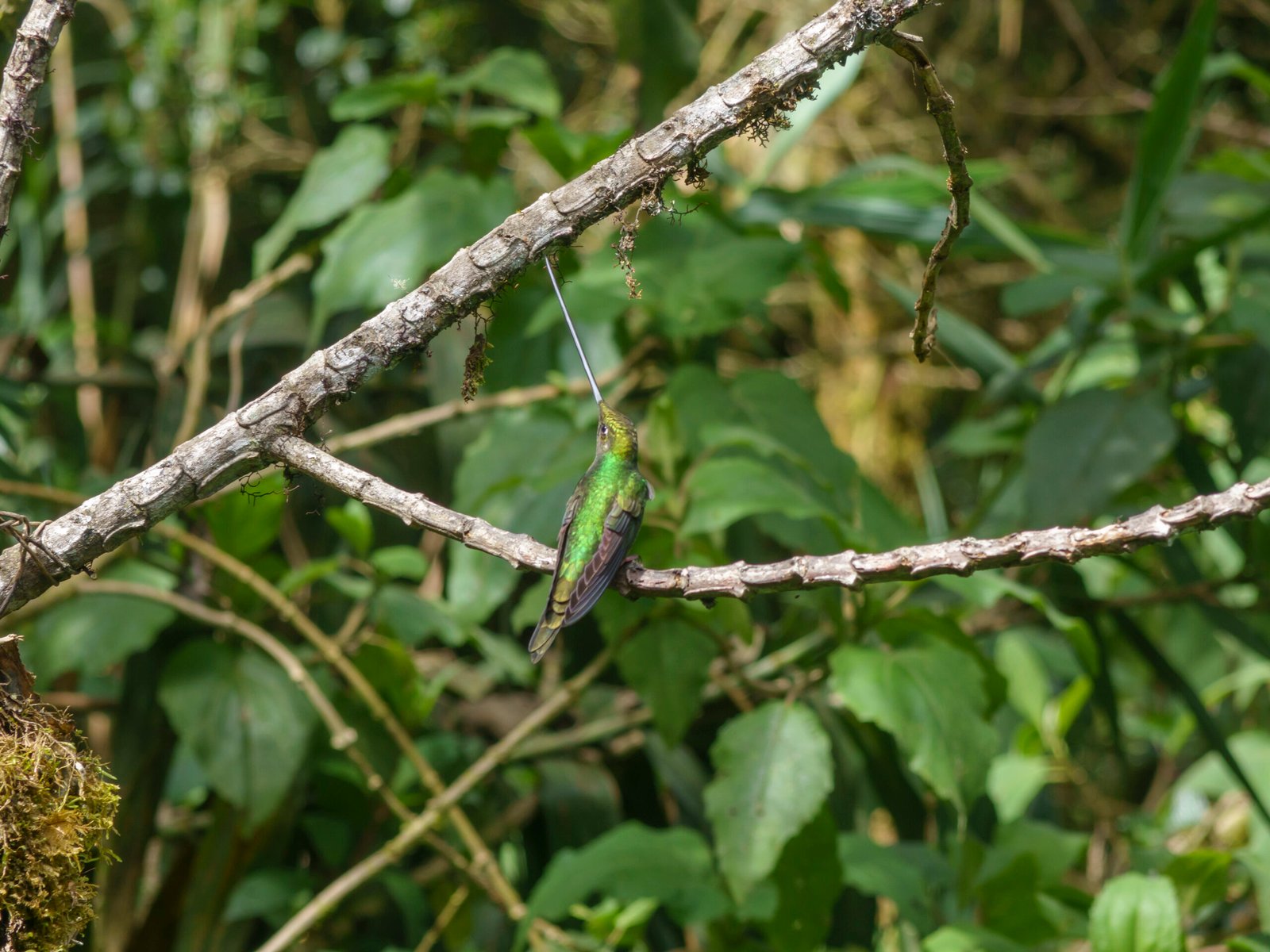
(Ensifera ensifera), is a hummingbird species from the Andean regions of South America. It is the only member in the genus Ensifera. It is among the largest species of hummingbird and characterized by its exceptional long bill, being the only bird to have a beak longer than the rest of its body, excluding the tail. It uses its bill to drink nectar from flowers with long corollas and has coevolved with the species Passiflora mixta. While most hummingbirds preen using their bills, the sword-billed hummingbird uses its feet to scratch and preen due to its bill being so long.
It breeds from February to March and builds cup nests using moss. The sword-billed hummingbird is listed as being of least concern by the International Union for Conservation of Nature (IUCN) on the IUCN Red List, but is threatened by climate change and deforestation.
The bill is the largest of any hummingbird and the largest with respect to body length for any bird.

Appearance
The sword-billed hummingbird is among the largest species of hummingbirds. Adults are 13–14 centimetres long (5.1–5.5 in) excluding the bill and weigh 10–15 g (0.35–0.53 oz). Males being slightly larger on average than females. The most distinctive feature of the species is the enormous bill, which is 8–12 centimetres (3.1–4.7 in) long.
The sword-billed hummingbird displays sexual dimorphism. Males have shorter bills but longer wings and tails than females. Males have bronze-green upperparts with coppery-bronze heads, a discreet white spot behind the eye, dusky throats, metallic green underparts, a dark gray belly, and a forked blackish bronze-green tail. Some males have white on the chin and throat. Females have similar upperparts, but have white underparts and grayish throats and bellies speckled with green. The tail is less deeply forked and is edged grayish white. Juveniles look similar to females. Its bill is black, heavy, and slightly upturned.
Distribution
The sword-billed hummingbird is found in the Andes from western Venezuela through Colombia, Ecuador, and Peru to Bolivia. It inhabits humid and wet montane forest, forest edges, shrubland, gardens, and patches of páramo at elevations of 1,700–3,500 m (5,600–11,500 ft), but is most common at elevations of 2,400–3,100 m (7,900–10,200 ft). It’s distribution correlates with the distribution of species of the subgenus Tacsonia in the genus Passiflora, due to its highly specialized bill and feeding habits.

Diet and Nutrition
The sword-billed hummingbird is a specialist feeder, feeding mainly on the nectar of flowers with long corollas, including Brugsmania sanguinea, Datura stramonium, Passiflora mixta, P. pinnatistiplua, P. mollissima and P. sexflora, along with flowers from the genera Aethanthus, Fuchsia, Salpichroa, and Solanum. It probes flowers from below while feeding, and is a trap-line feeder. “In ethology and behavioral ecology, trap-lining or traplining is a feeding strategy in which an individual visits food sources on a regular, repeatable sequence, much as trappers check their lines of traps. Traplining is usually seen in species foraging for floral resources.” It also hunts insects, catching flying insects by keeping the bill open.
Mating Habits
Breeding occurs from February to March. Nests are cup-shaped and made of moss, and are usually hung among root fibers high above the ground.


No Comments